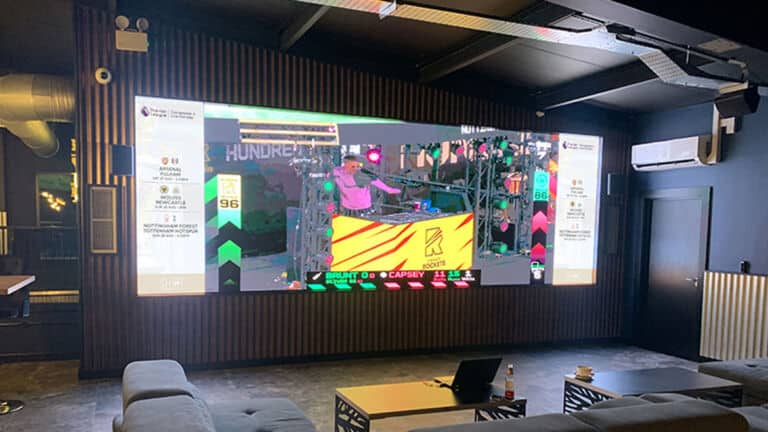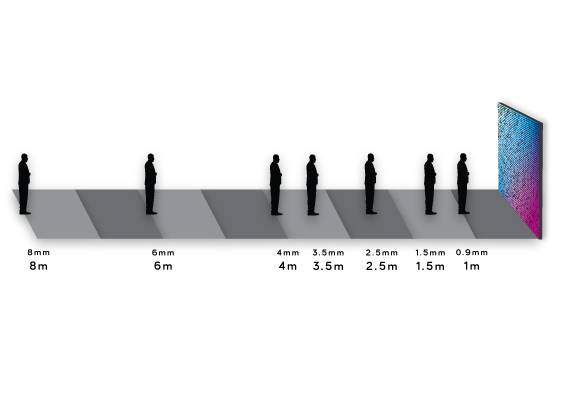When you are researching LED displays for outdoor or high-traffic applications the durability and weather resistance are an essential aspect. Here's the reason why LED displays are so vital:
1. Longevity as well as cost-Effectiveness
Durability. LED displays that are durable will endure impacts, vibrations, and other physical strains. Displays with a high level of durability last for longer. This makes it less necessary to repair or replace them often. This leads to a higher overall cost-efficiency.
Application: If the exhibit is situated in an area which is susceptible to being damaged (such as public spaces such as sports venues, public areas, or even rental markets), durability is essential to ensure that your investment lasts.
2. Outdoor Performance
Weather Resistance Outdoor LED displays need to endure a range of weather conditions including weather, wind and variations. The displays that are designed to resist weather will perform reliably and will not deteriorate in these conditions.
IP Rating IP Rating - The IP (Ingress Protection) rating indicates the level of protection from dust and water. A minimum IP65 rating (protection from dust and water jets) is a must for outdoor display. The display should be able to endure extreme weather conditions, without damaging the display or short-circuiting it.
The resistance to weather in outdoor installations is important, including digital signage, billboards and stadium screens. When a display malfunctions during bad conditions, it can lead to expensive downtime and repairs.
3. Temperature Resistance
LED displays are vulnerable to extreme temperatures. They can be exposed to both cold and hot extremes, which can affect their performance. Displays of high-quality are built to work within a wide temperature range.
Application: If you live in an area that has extreme conditions for weather, like cold winters or hot deserts It is crucial to select a display that can withstand the temperature. This will allow for continuous performance throughout the year.
4. and Moisture Protection. and Moisture Protection
Waterproofing LED displays Displays that are waterproof stop moisture from entering into internal components of the display, which can result in short circuits or even damage. This is especially important in areas with high humidity levels or heavy rain.
Application: Displays in waterbodies, coastal areas or in areas that experience frequent rain are waterproofed to prolong their life and avoid failures.
5. UV Protection and Sunlight durability
UV Resistance: Excessive exposure to sunlight can result in discoloration and degrading of materials used to display. UV-resistant displays are treated to withstand the damaging UV rays' effects keeping their appearance and performance over time.
UV protection is required in areas where there is direct sunlight or in sunny areas. Also, it is crucial to maintain the image quality.
6. Safety and Compliance
Safety - Fire Resistant: For safety reasons, it's important to ensure that your exhibits are not prone to fire. This is crucially important for places that are indoors, like malls or concerts venues with high occupancy.
Application: Ensure that the display is in compliance with safety standards will protect your investment as well as assisting you to meet local regulations. This will help avoid potential legal issues.
7. Maintenance and downtime reduced
Low maintenance. Weatherproof and durable displays require less maintenance because they are more resistant to environmental damages. This can reduce maintenance costs and time to repair.
Application: For applications that are critical in which downtime could be disruptive or costly (such as transportation hubs, emergency information systems or in the case of transportation hubs) Durability and weather resistance will ensure that the display can function with minimal intervention.
Conclusion:
To ensure that LED displays are long-lasting, reliable and affordable, they should be durable and resistant to elements, particularly in areas which are stressful or outdoor. They ensure that the display can withstand harsh conditions, which reduces the requirement for repairs and maintaining the same performance. Prioritizing weather resistance and durability is essential when evaluating LED display options for use where environmental elements are significant. Check out the top rated smd screens for more examples including board led, transparent led panel, led transparent display, church led wall, led panels, led in walls, display device, led panel rental, led in walls, transparent led panel and more.

What Is The Importance Of Viewing Angle When Searching For Led Displays?
When analyzing LED displays for LED displays, the angle of view is an important aspect to take into consideration. This is particularly important when it comes to applications that require the display to be seen from different angles and positions. The viewing angle is important for a number of reasons.
1. Uniform Image
Definition: The angle of view for LED displays relate to the maximum angles that the display can be viewed in a way that offers acceptable visual performance, typically in terms of the brightness or the color uniformity. Often the viewing angle will be stated both in horizontal and vertical directions.
Important An angle of view that is wide can ensure that the picture stays unchanged regardless of what position the viewer occupies relative to the display. This ensures that brightness and colors are not affected when viewed sideways or from above or below.
2. Audience Experience
Impact on Large Venues Impact on Large Venues: In big venues such as arenas, concert halls or conference centres, audience members are distributed across a vast area. The narrower the angle at which they can view is, the more difficult it will be for those who are seated at an acute angle to the screen.
Application Large-scale installation or events in which the public is positioned in a wide arc around the display an expansive view angle is necessary to ensure that everyone has a clear and vibrant view of the contents.
3. Insufficiency of Public Spaces
Public Display Applications. In areas such as shopping centers or transportation hubs where people are observing the display in every direction, the viewing angles is crucial. A narrow viewing angle can reduce the impact and engagement of the display.
Application: Wide viewing angles are ideal for digital signs in public spaces. They can increase their reach and ensure that the content will be visible and attractive throughout the day.
4. Content Consistency
The uniformity of color and brightness: A display that has a bad viewing angle may exhibit color shifting or brightness drop-off when viewed from positions that are off-center. This is a concern for content that is related to brands, and where uniformity and accuracy in color are important.
Application: For settings in which brand or color consistency is critical, such a retail displays and corporate environments the wide viewing angle helps to make sure that the display's appearance is consistent across all angles of view.
5. Installation Flexibility
Flexibility for placement The versatility of displays with wide viewing angles allow for greater flexibility in the locations they can be installed. This gives you more creative possibilities in terms of positioning. For instance it can be wrapped around columns or placed in areas where multiple viewers can walk by.
Application: For artistic or architectural LED displays such as those in museums, galleries, or immersive experiences, a wide view angle is a great way to create innovative designs without compromising the viewer's experience.
6. The renting and staging of a performance
Event Settings for rental and staging where displays are set up in various settings and locations and in different locations, a wide view angle is essential to ensure that the display will perform effectively in any setting and will provide the same quality regardless of the position of the audience.
Application for concerts, or trade shows in which the audience can change locations or where the screen is seen from multiple locations, a broad viewing angle ensures that all attendees get a clear and enjoyable view of the content.
7. Impact on ROI
Maximizing Visibility - A display that offers a wide angle view can attract a wider audience, which will increase the impact and ROI (return on investment). This is particularly relevant for advertising screens or informational displays where maximising visibility is vital to get the desired outcomes.
Application: In a commercial installation to increase engagement, making sure that the display is visible from multiple angles can increase the quality of content displayed.
Conclusion:
The viewing angle directly affects the effectiveness, clarity and reliability of LED display. This is particularly important when the viewers are spread out in a space where the display could be viewed from different positions, or where content consistency is essential. When looking at LED displays it is essential to choose the display that has a broad view angle. This will ensure that the display meets your needs and gives an excellent viewing experience for every user. Read the recommended led rental screen for blog advice including led display screen rental, flexible led screen display, transparent display monitor, transparent screen, transparent screen monitor, video wall church, outdoor digital display, led screen for outdoor, led display device, church video wall and more.

How Important Is The Roi, Cost And Energy Efficiency When You Are Researching Led Displays?
When researching LED displays, costs and ROI (Return on Investment) and energy efficiency are important elements. They directly affect the financial viability of the investment, its long-term benefits and operational expenses. What is the reason each of these variables is crucial:
1. Initial Cost
Budget considerations: The initial price of buying LED displays is a significant aspect of any project. The cost of a display isn't the only aspect to be considered. It is also the installation cost, mounting system and other accessories.
Quality and. The initial cost of a display could appear attractive, however it may come with a price in terms durability, quality, or other features. The initial price should be weighed against the performance and lifespan of the display.
Application: When budgets are tight It is essential to evaluate the expense of a display in relation to its performance. For instance, expensive displays might be essential for applications, such as advertising in prime locations, while more economical alternatives may be sufficient for less demanding situations.
2. Return on Investment
Revenue Generation - The ROI of an LCD display is often determined by its capacity to generate income, either via advertising or an increase in visibility for a brand. A display that delivers captivating content and successfully captures the attention of customers can yield a significant ROI via sales or advertising.
Durability and Longevity: High-quality displays that are more durable and have longer lives typically have a better ROI, as they need less frequent replacements and have lower maintenance costs over time. Savings over time can be enough to offset the initial cost of a display that is more durable.
Impact of Features on ROI such as high resolution, a wide viewing angle, and high brightness may increase initial costs but improve the effectiveness of the display. It can also lead to a better ROI by increasing the level of participation and enhancing visibility.
3. Energy Efficiency
Operating Costs: The energy efficiency of LED displays is essential to reduce ongoing operating expenses. The lower your electricity costs, the better. This is especially true for large displays or displays that operate all day long.
Environmental Impact Environmental Impact: Energy-efficient displays help achieve sustainability goals by decreasing carbon footprints. This is crucial for companies and businesses who are committed to environmental responsibility or are required to comply to regulations regarding energy use.
Long-Term Cost Savings: Although energy-efficient displays are more expensive in cost initially, they can save you a significant amount in energy bills over the course of their life, improving the ROI overall.
Application: For installations located in regions with high energy costs or for large-scale deployments in which power consumption is high the energy efficiency of the installation can make a an important difference in operational expenses.
4. Cost of Ownership Total Cost of Ownership
Maintenance and Repairs. The total cost includes the purchase price as well as costs for repairs, maintenance and downtime. TCO is usually lower for displays which are more durable, have longer life spans, and offer greater cost efficiency in the long-run.
Upgrades and Scalability: Take into account the ease at upgrading or scale your display system. A modular display which is able to be upgraded or expanded at a minimal cost can be a good long-term investment.
Applications: In areas where displays are expected to last for a long time like corporate settings, public spaces, or high-traffic retail areas Concentrating on TCO will ensure that the investment will be cost-effective over time.
5 Lease Option and Financing
Financing options: A lot of suppliers have flexible leasing and financing programs that make it easy for you to cover upfront costs on high-quality displays. This is particularly helpful for businesses who need to conserve cash flow and still invest in effective digital signage.
ROI Considerations: Leasing options could also affect ROI because they permit businesses to move to more modern technology without the need for huge initial investments, ensuring that the display technology is up-to-date and effective in delivering returns.
6. Market Competitiveness
Cost is versus. Competitors: Your ability to compete in the marketplace can be affected by the price of your LED display and ROI. A more effective display may allow you to outshine competitors, attracting more clients or customers and consequently generating more profit on your investment.
Application: In highly-competitive industries like entertainment, retail or the media, investing in a better display that delivers better ROI can provide a huge benefit.
Conclusion:
In order to determine the benefits and value of an investment in an LED screen it is essential to look at factors such as cost, ROI, and energy efficiency. The display's performance will be improved by balancing initial costs with anticipated returns on investment. These factors are essential for making an informed decision that aligns with your budget, operational goals and long-term goals. Check out the recommended flexible led panels for site recommendations including led board rental, outdoor screen led, led display transparent, transparent screen monitor, advertising displays, led display device, led outdoor display screen, board led, led transparent screen, outdoor screen led and more.
